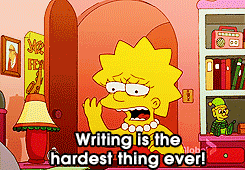"The Boston Photographs" by Nora Ephron
This is a make-up for last week's blog post 3 which was a reflection of our narrative essay. This post will evaluate Ephron's style of wrting in the article "The Boston Photographs." This sensationalized real life account describes the horrifying images of a woman and a child as they are rescued by a firefighter from a fire escape. Ephron begins the article with the words of the Boston Photographer. He describes how he took that photo in that instant: the scene surrounding the heartbreaking photo of a woman, a child and a firefighter. Ephron continues with a highly descriptive paragraph of what the photos looked like. A description that creates a visual image that is hard to contend with. In our minds, we see the image of the three victims on the fire escape, then we see the fireman holding up the ladder, then we see the the the fire escape and the child slipping. We see a woman holding tho the child as she holds on to the firefighter. The next disturbing picture is the woman falling in mid sky with the child, succumbed to gravity we might say. Ephron tells us that the woman dies while the child survives.
Ephron says the pictures were a great example of photojournalism, a type of journalism she argues is powerful than written journalism. By looking at these photographs, one will unreluctantly agree.
The Boston Photographs received a negative reaction from the public who felt that these were sensationalized photos meant to look like "sideshow act." However, Ephron and some journalist will disagree with the public's reaction and find the importance of publishing such photos however graphic and disturbing it might be. Some journalists thought it was an important issue for the public to know about the deterioration of the fire escapes. Was that their true intention?
Ephron who feels that the the Boston Photographs is just like any accident or war photos thinks that they should be published. She questions why the last picture, that shows the woman and the child lying on the ground, was not released. She says that death is part of life; that photos that has been released in the past about automobile accidents were focused on death not the mangled cars. She concludes that photojounalism is meant to disturb readers.
I do not agree with Ephron's argument. Just because photos have been taking does not mean they should be released. The readers are the main deciders of what should or should not be published, not the editors. At the end of the day, you have to get paid and that only depends on the consumer rate. You might not care about the paycheck, then I guess that will be a different issue. However, every journalist and editor should consider the benefit of photos or any article when been published. Is it really worth it? How will I react to these photos if I was the consumer? In the end, we have to live with these decisions, can I live with it? Journalist sand editors may find that, by considering such questions, it might be useful to exclude some information, that in the long run has no benefit to them or the reader.


